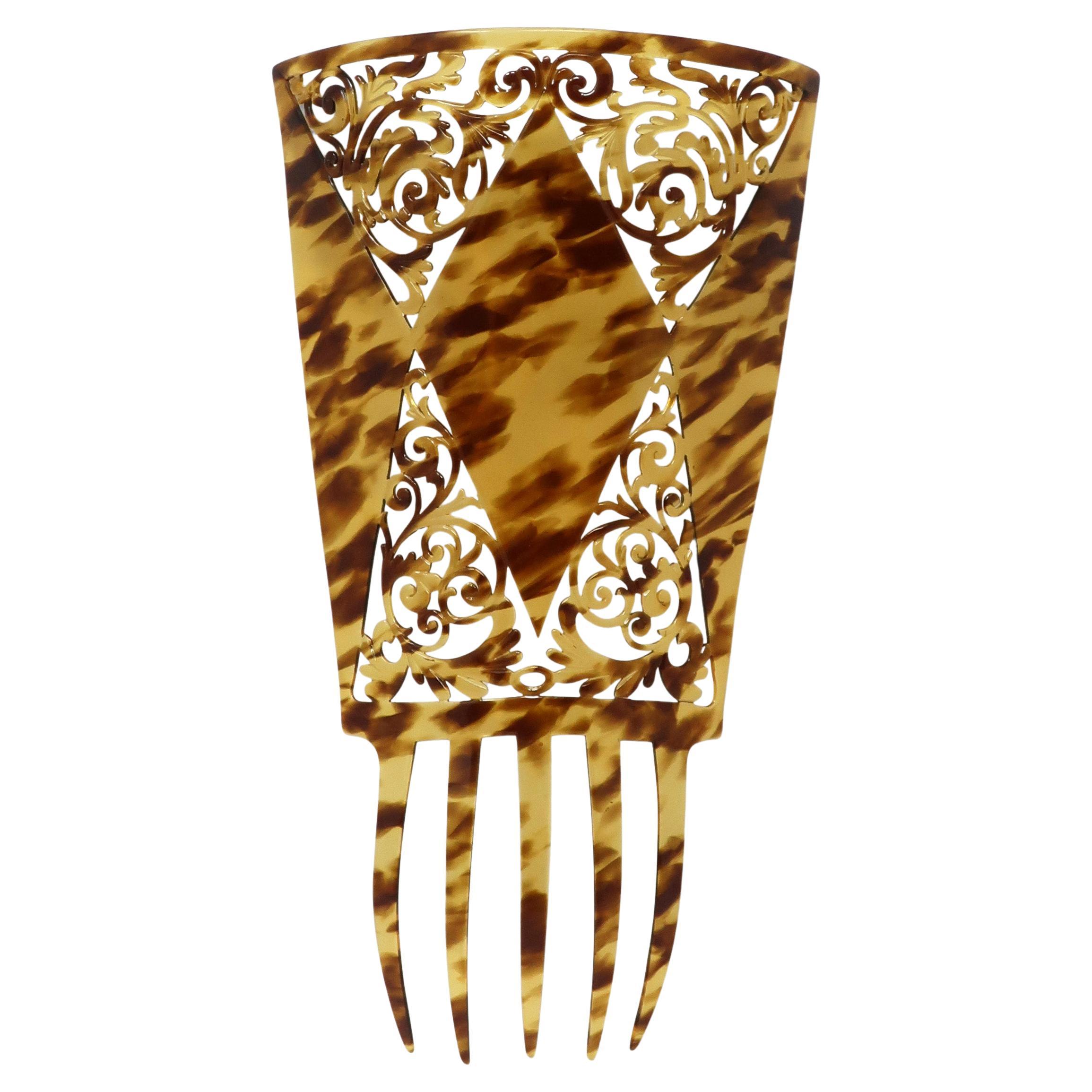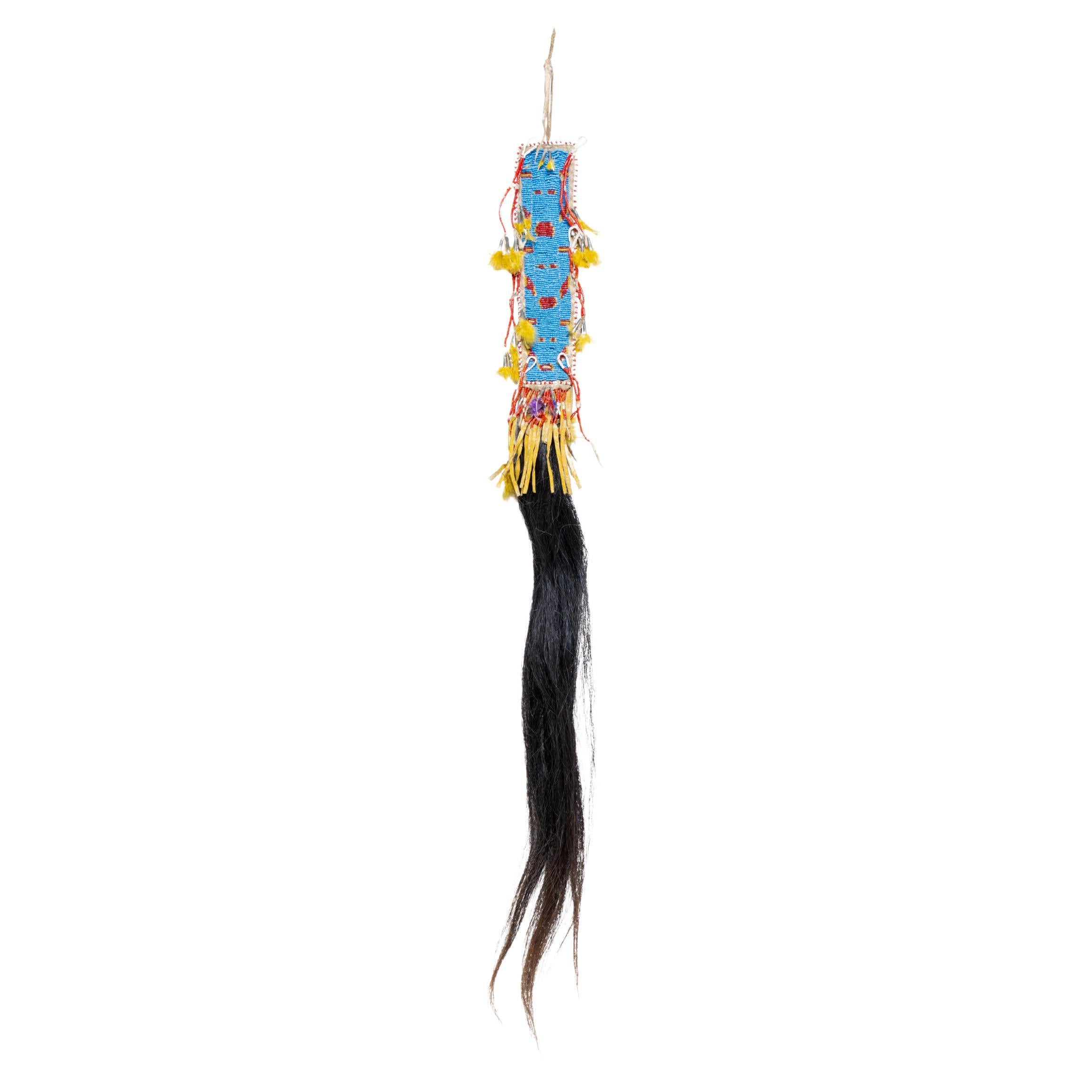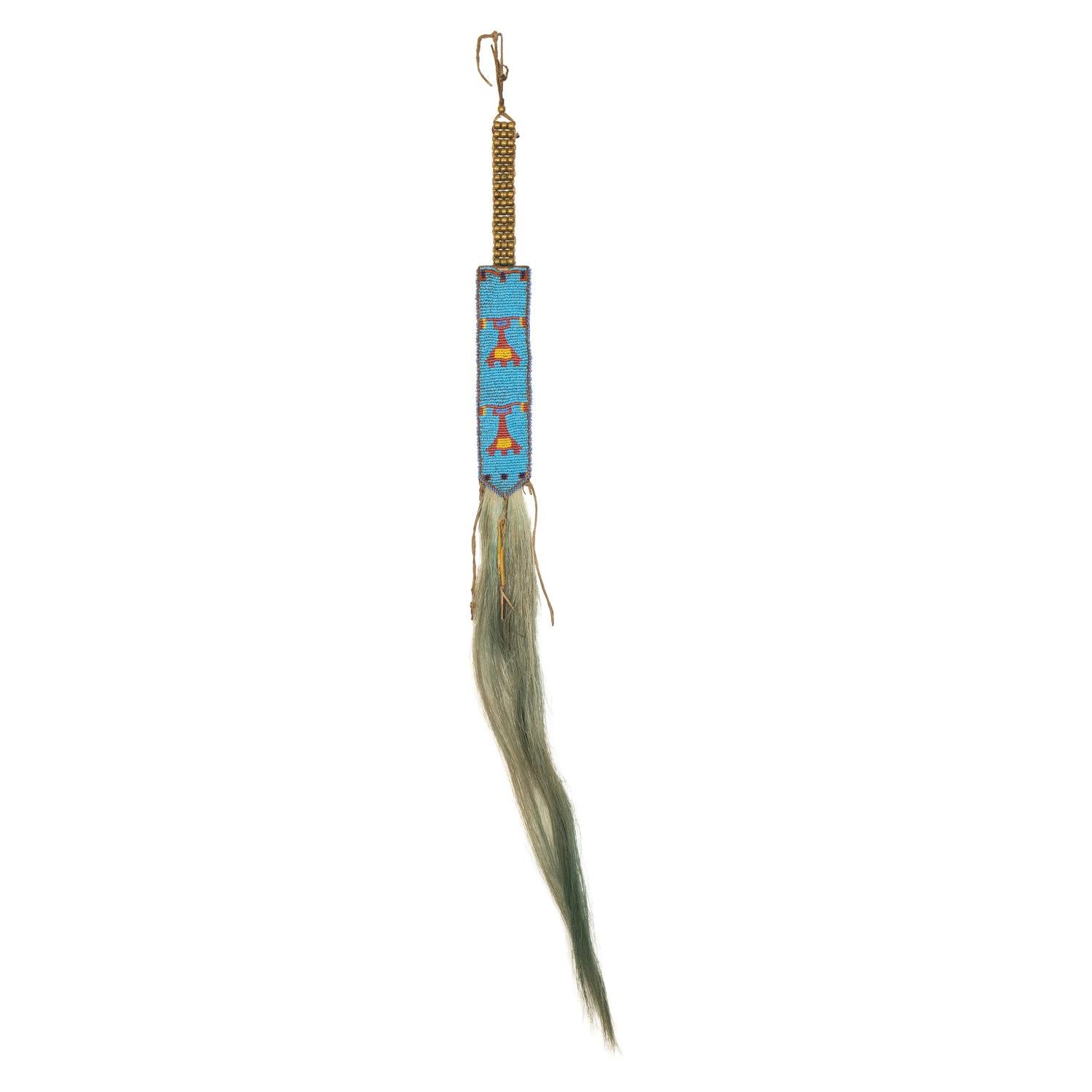Items Similar to Rare 19th Century English Tunbridgeware Hair Pin or Slide
Want more images or videos?
Request additional images or videos from the seller
1 of 13
Rare 19th Century English Tunbridgeware Hair Pin or Slide
About the Item
Presenting an absolutely gorgeous and extremely unique and rare 19th century British Tunbridgeware hair pin/bobbin or slide.
This slide is unlike any of it’s kind we have seen before…. it is a very rare survivor !
From circa 1860–1880.
Made of walnut with gorgeous marquetry inlay on the entirety of the front with classic Tunbridgeware micro-mosaic all over the front. The rear is walnut.
The marquetry inlay appears to be various different woods, namely, maple, walnut and satinwood.
Would have been worn in a Lady’s hair bun with the micro-mosaic facing forward.
This would have belonged to a very elegant lady in the mid to late 19th century.
Tunbridge ware is a form of decoratively inlaid woodwork, typically in the form of boxes, that is characteristic of Tonbridge and the spa town of Royal Tunbridge Wells in Kent in the 18th and 19th centuries. The decoration typically consists of a mosaic of many very small pieces of different coloured woods that form a pictorial vignette. Shaped rods and slivers of wood were first carefully glued together, then cut into many thin slices of identical pictorial veneer with a fine saw. Elaborately striped and feathered bandings for framing were pre-formed in a similar fashion.
There is a collection of Tunbridge ware in the Tunbridge Wells Museum and Art Gallery in Tunbridge Wells.
The famous makers of Tunbridge ware were in the Tunbridge Wells area of Kent; their most notable work was from circa 1830-1900.
Early makers of Tunbridge ware, in Tunbridge Wells in the mid-18th century, were the Burrows family, and Fenner and Co. In the 19th century, around 1830, James Burrows invented a technique of creating mosaics from wooden tesserae. Henry Hollamby, apprenticed to the Burrows family, set up on his own in 1842 and became an important manufacturer of Tunbridge ware, employing about 40 people.
Edmund Nye (1797–1863) and his father took over the Fenner company when William Fenner retired in 1840, after 30 years in partnership with him. Thomas Barton (1819–1903), previously apprenticed at the Wise factory, joined the Nyes in 1836, and worked as Nye’s designer; he took over the business in 1863 and continued there until his death.
In Tonbridge (near to Tunbridge Wells), George Wise (1703–1779) is known to have had a business in 1746. It continued with his son Thomas, and Thomas’s nephew George (1779–1869), who took over in 1806. In its early years the company made articles such as workboxes and tea caddies with prints of popular views; later items had pictures created from mosaics. Their workshop in Tonbridge, Wise’s Tunbridge Ware Manufactory, was next to the Big Bridge over the Medway; the building was demolished in 1886 to widen the approach to the bridge.
Tunbridge ware became popular with visitors to the spa town of Tunbridge Wells, who bought them as souvenirs and gifts. Articles included cribbage boards, paperweights, writing slopes, snuffboxes and glove boxes.
At the Great Exhibition of 1851, Tunbridge ware by Edmund Nye, Robert Russell and Henry Hollamby was shown; Edmund Nye received a commendation from the judges for his work. He exhibited a table depicting a mosaic of a ship at sea; 110,800 tesserae were used in making the picture.
The manufacturers of Tunbridge ware were cottage industries, and they were no more than nine in Tunbridge Wells and one in Tonbridge. The number declined in the 1880s; competent craftsmen were hard to find, and public tastes changed. After the death of Thomas Barton in 1903 the only surviving firm was Boyce, Brown and Kemp, which closed in 1927.
Marquetry was an old technique which was continued by Nye and Barton to create images such as birds or butterflies.
‘Green Oak’ as caused by the fungus Chlorociboria aeruginascens.
Stickware and half-square mosaic was invented by James Burrows in about 1830: a bunch of wooden sticks of different colours, each having triangular or diamond-shaped cross section, were tightly glued together; in the case of stickware, the resulting block was dried, then turned to form an article such as the base of a pincushion. For half-square mosaic, thin slices were taken from the composite block, and applied to a surface.[1][2][4]
Tesselated mosaic, was a development by James Burrows of half-square mosaic; it was adopted by George Wise and Edmund Nye. Minute tesserae were used to form a wide variety of geometric and pictorial designs.
Many sorts of wood were used for the various colours; about 40 were in regular use. Only natural colors were used; green was provided by “green oak”, produced by the action of fungus on fallen oak. Designs for articles were often taken from designs of Berlin wool work.
- Dimensions:Height: 6.75 in (17.15 cm)Width: 1 in (2.54 cm)Depth: 0.2 in (5.08 mm)
- Style:High Victorian (Of the Period)
- Materials and Techniques:
- Place of Origin:
- Period:
- Date of Manufacture:1860-1880
- Condition:Wear consistent with age and use. Very good original condition. No loss of mosaic.
- Seller Location:Dallas, TX
- Reference Number:1stDibs: LU3978118877992
About the Seller
4.9
Platinum Seller
These expertly vetted sellers are 1stDibs' most experienced sellers and are rated highest by our customers.
Established in 2015
1stDibs seller since 2018
349 sales on 1stDibs
Typical response time: <1 hour
- ShippingRetrieving quote...Ships From: Dallas, TX
- Return PolicyA return for this item may be initiated within 7 days of delivery.
More From This SellerView All
- 19C English Tunbridgeware Tabletop Stationary Box, Micro MosaicBy Tunbridge WareLocated in Dallas, TXStunning little 19th century tabletop stationary box made of micro-mosaic. Made in Britain, circa 1870, in Tunbridge Wells, hence these type of works are called Tunbridgeware! ...Category
Antique Late 19th Century English High Victorian Decorative Boxes
MaterialsBurl, Boxwood, Ebony, Walnut
- 19th Century English Burl Walnut Sutherland TableLocated in Dallas, TXLate 19th century English drop-leaf table from the Mid-Victorian Era. Made of gorgeous yellowish-brown walnut with a fantastic burl walnut table top. The patina on the top is simply glorious!! The table was made circa 1850-60. It sits on beautifully turned fluted legs with the porcelain and brass casters. Two of the legs swing inwards and outwards to extend the 2 leaves of the table. Fully extended the table has a fabulous curved and indented edge, in an oval shape on both ends. The center column is beautifully turned and fluted. The 2 side columns are again beautifully turned and fluted and end with 2 extending scrolling supports that end in turned bulbous twin feet. This is a high quality item and highly desirable! Antique Sutherland Tables...Category
Antique Mid-19th Century English High Victorian Side Tables
MaterialsWalnut, Burl
- Rare 19th Century English Eclipse Patented Telescopic DeskLocated in Dallas, TXPresenting an exceptionally rare 19th century English eclipse patented telescopic desk. Made of oak in the Rococo style in Great Britain, circa 1880. Fully marked as “The Eclipse” ...Category
Antique Late 19th Century English Late Victorian Desks
MaterialsBrass
- Early 19th Century Aquatint Engraving of Grey Momus, John Frederick Herring Snr.By John Frederick Herring Sr.Located in Dallas, TXPresenting a fabulous and very rare, original early-19th century chromolithograph engraving after a painting by John Frederick Herring Snr., engraved by Ch...Category
Antique Early 19th Century English Early Victorian Prints
MaterialsPaper
- 19th Century Bronze Sculpture of Napoleon Crossing the AlpsLocated in Dallas, TXPRESENTING A LOVELY late 19C Bronze Sculpture of Napoleon Crossing the Alps. 19th Century Bronze of Napoleon on Horseback in Battle, with c...Category
Antique Late 19th Century French Napoleon III Figurative Sculptures
MaterialsBelgian Black Marble, Bronze
- 19th Century Large Civil War Era Bronze and Tin PitcherLocated in Dallas, TXPresenting a fabulous historic treasure of times past, namely, a 19th century large Civil War Era bronze and tin pitcher. From circa 1850, this is an American frontier piece. I...Category
Antique Mid-19th Century American American Classical Pitchers
MaterialsBrass, Bronze, Copper, Tin
You May Also Like
- 19th Century Tortoise Shell Decorative Hair Comb or Head PieceLocated in Brooklyn, NYA stunning and large antique 19th century tortoise shell, celluloid, or Bakelite hair comb or head piece with an intricate carved floral and open scroll ...Category
Antique Mid-19th Century Collectible Jewelry
MaterialsPlastic
- Dutch 19th Century gold sliding pencilLocated in Delft, NLDutch 19th Century gold sliding pencil A Dutch gold pencil holder in a ribbed motif with a sliding system. These pencil holders are usually made as...Category
Antique 19th Century Dutch Collectible Jewelry
MaterialsGold
- 19th Century Northern Plains Hair DropBy Native American ArtLocated in Coeur d'Alene, IDNorthern Plains hair drop with red beading with accents on hide, long quilled drops ending in tin cones with red feather fluffs, long black horsehair drop now doubled up on beading. Period: 19th century Origin: Great Plains - Northern Plains, Native American Size: 6" x 35" overall Family Owned & Operated Cisco’s Gallery deals in the rare, exceptional, and one-of-a-kind pieces that define the history of America and the Old West. Our pieces range from American Indian to Cowboy Western and include original items of everyday life, commerce, art, and warfare that tamed America’s frontier. Our 14,000 square foot gallery opened in 1996 in beautiful Coeur d’Alene, Idaho. Personal Service Cisco’s operates on old fashioned values – honesty and integrity, and all of our items are backed by our money back guarantee. We appreciate the opportunity to earn your business. Whether you desire assistance with a jewelry purchase, choosing a gift, identification, or even selling – we hope to be your trusted source. Native American, garments, Blackfeet, headdress, collectibles, antiques, Native American beadwork...Category
Antique Late 19th Century American Native American Native American Objects
MaterialsHide, Beads, Feathers
- 19th Century Northern Plains Hair DropBy Native American ArtLocated in Coeur d'Alene, IDNorthern Plains hair drop. Beaded blue with red accents. Quilled drops having tin cones and yellow feather fluffs with long black horsehair drop. Period: 19th century Origin: Great Plains - Northern Plains, Native American Size: 6" x 35" overall Family Owned & Operated Cisco’s Gallery deals in the rare, exceptional, and one-of-a-kind pieces that define the history of America and the Old West. Our pieces range from American Indian to Cowboy Western and include original items of everyday life, commerce, art, and warfare that tamed America’s frontier. Our 14,000 square foot gallery opened in 1996 in beautiful Coeur d’Alene, Idaho. Personal Service Cisco’s operates on old fashioned values – honesty and integrity, and all of our items are backed by our money back guarantee. We appreciate the opportunity to earn your business. Whether you desire assistance with a jewelry purchase, choosing a gift, identification, or even selling – we hope to be your trusted source. Native American, garments, Blackfeet, headdress, collectibles, antiques, Native American beadwork...Category
Antique Late 19th Century American Native American Native American Objects
MaterialsHide, Beads, Feathers
- 19th Century Sioux Quilled Hair DropBy Sioux Indian ArtLocated in Coeur d'Alene, IDSioux hair drop with brass trade beads, blue beaded background having red and yellow geometric designs. White horsehair drop dyed blue. Period: Last quarter of the 19th century Orig...Category
Antique Late 19th Century American Native American Native American Objects
MaterialsOther
- 19th Century English Games Compendium SetLocated in London, GBThe domed case constructed in a well marked Coromandel, with protective brass guard strips, having a rising and lockable lid and a gated front, with a Satinwood interior, revealing t...Category
Antique 19th Century English Victorian Games
MaterialsBrass
Recently Viewed
View AllMore Ways To Browse
Rare 19th Century
Mid Century Pin
Mid Century Hair
Extremely Rare Collectible
Rare Old Antique Items
Hair Cuts
Antique Wood Art Collectibles
Sliding Diamond
Rare Gifts
Antique Wool Work
Antique Hair Jewelry
Antique Hair Jewellery
Wooden Slide
English Gifts
Green Oak Antique
Victorian Hair
Victorian Slider
Victorian Slide





